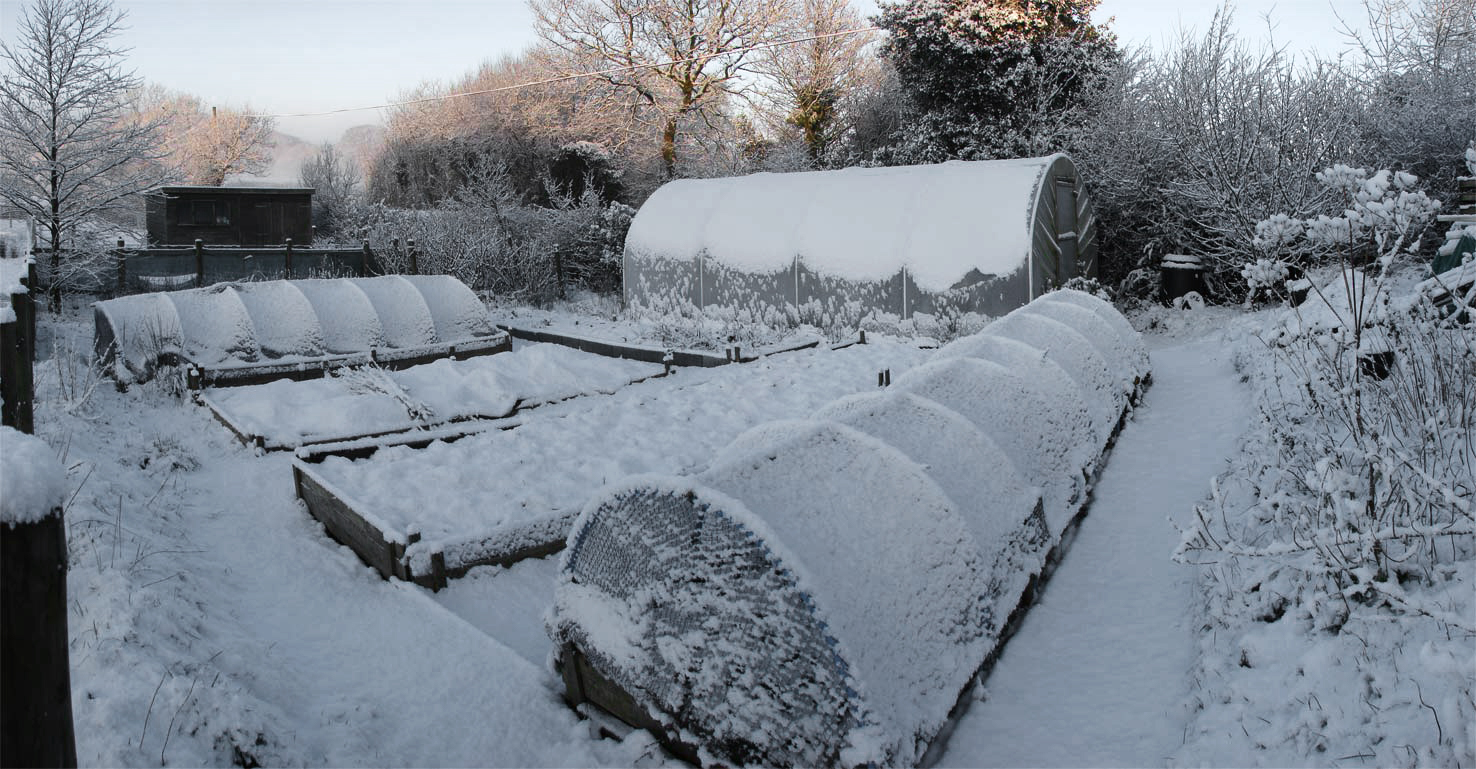Only the mildest of days are likely to drag you out to the allotment in January. That being said there are plenty of things you could be getting on with.
Spend time ordering seeds and sketch out a plan for what you are going to grow and where on the plot you will grow it.
You can dig all available ground if it’s not too heavy and wet – if too much soil sticks to the spade then it’s too wet. And if you can get hold of well-rotted manure, spread it over the surface of any empty beds and let the worms take it down, if there’s any left on top, dig it in around March time.
Harvest hardy winter varieties of cabbages, cauliflowers and other brassicas, plus leeks, celeriac and root vegetables such as parsnips, swedes and winter radishes, Dig up and leave leeks and parsnips on top of the soil on a frosty night and the frost will sweeten them.
Warm up areas of seedbeds by covering them with sheets
Buy and start to chit seed potatoes (our shop sells them at a great price)
Winter prune established apple and pear trees
Check fruit cages for damage and make repairs if required
Order your seeds and onion sets
Start off garlic and shallots in pots in a cold frame
Give a potash dressing to strawberries, gooseberries and currants (white and red)
Sow sweet peas in a heated greenhouse
If you have a heated greenhouse, you can also sow French beans in pots, Chillis, Aubergines and Radish.
Peas – for a very early crop, sow seeds in pots under glass and harden off to plant outdoors in March or April.
Prune raspberries if not already done.
Complete fruit pruning (not stone fruits)
Force rhubarb for sweeter sticks.
Prune grapevines.
Plant fruit bushes and trees.
Tidy up your shed!
Wash all pots and seed trays.
Clean greenhouse.
It’s a good time to look for slugs and snails under pots, wooden boards etc.
Start a compost heap.
Invest in a wormery.
Test your soil. You can test the Ph by using a kit, or send a sample away and have it tested properly.
Clean and sharpen tools.

